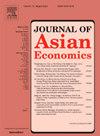Transition to a greener economy: Climate change risks and resilience in a state-space framework
IF 2.9
3区 经济学
Q1 ECONOMICS
引用次数: 0
Abstract
Transitioning to a low-carbon economy is a long and challenging process requiring a well-planned policy mix to achieve net-zero emissions. This paper proposes a country-agnostic, empirical framework to analyse a country’s preparedness for mitigating climate change risks. Utilizing a dynamic factor model (DFM), we create composite indices to measure climate change 'exposure' and 'resilience' by integrating diverse datasets on renewable and non-renewable production, energy consumption, structural and economic factors. Further, we employ a flexible ‘predator-prey’ species interaction model to capture the dynamic interaction between exposure and resilience. We apply our proposed framework in the context of India, a large developing economy. Our analysis indicates that, while India’s climate change exposure has declined relative to the world, its resilience towards climate change has significantly diminished over time. We also find that an increase in resilience leads to a direct decline in future exposure to climate change. Our framework underscores the need for policies that foster climate change resilience such as expanding renewable energy production, ensuring accessible finance for the renewables sector, developing climate financing infrastructure and increasing investment in research and development for a smoother transition.
向绿色经济转型:国家空间框架下的气候变化风险和复原力
向低碳经济转型是一个漫长而具有挑战性的过程,需要精心规划的政策组合来实现净零排放。本文提出了一个与国家无关的经验框架来分析一个国家缓解气候变化风险的准备情况。利用动态因子模型(DFM),我们通过整合可再生和不可再生生产、能源消耗、结构和经济因素的不同数据集,创建了衡量气候变化“暴露”和“恢复力”的复合指数。此外,我们采用了一个灵活的“捕食者-猎物”物种相互作用模型来捕捉暴露和恢复力之间的动态相互作用。我们在印度这个发展中大国的背景下应用我们提出的框架。我们的分析表明,虽然印度的气候变化风险相对于世界有所下降,但随着时间的推移,其应对气候变化的能力显著减弱。我们还发现,复原力的增强会导致未来气候变化风险的直接下降。我们的框架强调需要制定增强气候变化适应能力的政策,如扩大可再生能源生产,确保可再生能源部门获得融资,发展气候融资基础设施,增加研发投资,以实现更平稳的过渡。
本文章由计算机程序翻译,如有差异,请以英文原文为准。
求助全文
约1分钟内获得全文
求助全文
来源期刊

Journal of Asian Economics
ECONOMICS-
CiteScore
4.70
自引率
9.40%
发文量
90
期刊介绍:
The Journal of Asian Economics provides a forum for publication of increasingly growing research in Asian economic studies and a unique forum for continental Asian economic studies with focus on (i) special studies in adaptive innovation paradigms in Asian economic regimes, (ii) studies relative to unique dimensions of Asian economic development paradigm, as they are investigated by researchers, (iii) comparative studies of development paradigms in other developing continents, Latin America and Africa, (iv) the emerging new pattern of comparative advantages between Asian countries and the United States and North America.
 求助内容:
求助内容: 应助结果提醒方式:
应助结果提醒方式:


